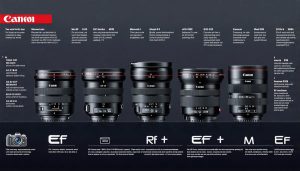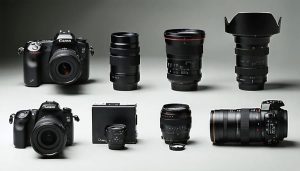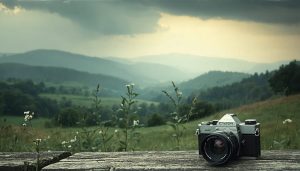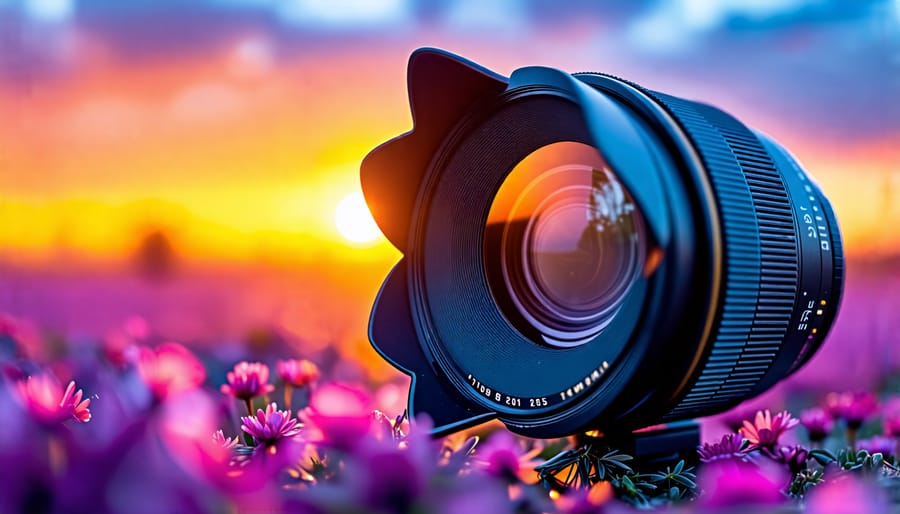
Shield your images from unwanted glare by attaching a lens hood to block stray light that can wash out your photo. Enhance image contrast and colors—especially in bright outdoor settings—by minimizing lens flare for a more vivid capture. Protect your lens physically from accidental bumps or scratches; a lens hood serves as a barrier against unforeseen impacts. Confidently shoot in challenging lighting conditions, such as sunsets or high-noon, by manipulating how light enters your lens, ensuring every shot remains striking and true to life.
Understanding Lens Hoods
What is a Lens Hood?
A lens hood is a simple but powerful accessory that attaches to the front of your camera lens. Its primary role is to block unwanted light from hitting the lens, which helps minimize glare and lens flare—common issues on bright, sunny days or when shooting towards a light source. By shading the lens, a lens hood enhances contrast and improves the overall quality of your photos, allowing you to capture images with richer colors and more detail.
Lens hoods come in various shapes and sizes, typically designed to match specific lenses. The most common types are petal-shaped and cylindrical hoods. While it might seem like an optional add-on, using a lens hood can make a significant difference, especially when you find yourself shooting in challenging lighting conditions. Picture this: photographing a sprawling landscape at sunrise without those pesky washed-out spots ruining your shot. Plus, it adds an extra layer of protection, guarding your lens against scratches, bumps, and even raindrops.
Different Types of Lens Hoods
Lens hoods, essential accessories for photographers, come primarily in two shapes: petal and cylindrical, each serving specific uses. Petal lens hoods, with their unique scalloped edges, are designed to maximize coverage while minimizing vignetting, which is the darkening of corners in images. This makes them ideal for wide-angle lenses, where the hood’s shape helps to prevent unwanted glare and flare without obstructing the field of view. Picture yourself capturing a breathtaking landscape at sunrise—the petal hood keeps stray rays from washing out the subtle hues of dawn.
On the other hand, cylindrical lens hoods are typically used with prime and telephoto lenses. Their straightforward, tube-like design provides even protection from extraneous light coming from all directions. This is especially useful in situations where you’re zooming in on distant subjects, like at a sports event or wildlife expedition, ensuring that the details in your image aren’t compromised by stray beams. By selecting the right lens hood, you not only protect your lens but also enhance image quality, capturing clearer, more vibrant shots in various light conditions.
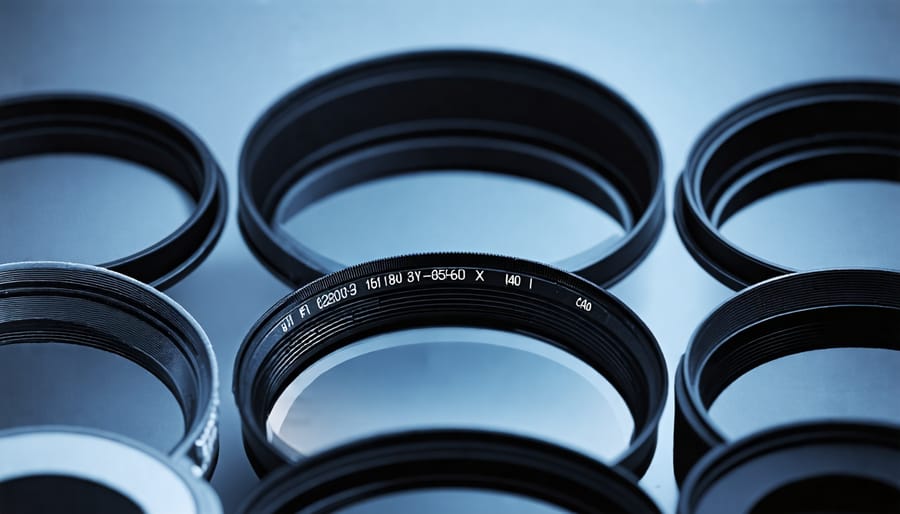
Key Benefits of Using a Lens Hood
Reducing Light Flare
Have you ever taken a photo on a bright, sunny day only to be disappointed by unexpected glare or annoying light flares that diminish the clarity of your image? This is where the trusty lens hood comes into play. Think of it as a shield for your lens, designed specifically to prevent stray light from entering the lens and causing flares, which can wash out colors and reduce contrast. By blocking these undesirable light sources, lens hoods help you capture images with enhanced clarity and vividness.
Imagine shooting a landscape during the golden hour. Without a lens hood, the beautiful tones can be compromised by glare from the sun or other reflective surfaces. With the hood attached, your photo remains free from those pesky flares, preserving the drama and mood you intended to capture. Whether you’re aiming for artistic expression or striving for technical excellence, mastering light is crucial, and the lens hood is an essential tool for achieving that perfect shot.
Improving Color and Contrast
Lens hoods do more than shade your lens from unwanted light; they play a pivotal role in enhancing the color depth and contrast of your photographs. By blocking stray light, lens hoods ensure that your camera captures only the light you intend, preventing washed-out colors and preserving the rich hues your subject offers. Imagine shooting a landscape at sunrise. Without a lens hood, sunlight might enter from the sides, causing flare that reduces contrast, making your vibrant reds, oranges, and purples appear duller. With a lens hood, those colors pop with vivid intensity. Additionally, by minimizing light intrusion, lens hoods help maintain the natural contrasts in your images, providing crisp details and clear distinctions between light and dark areas. This means your photos can achieve that sought-after depth, drawing viewers in with the story told through its stunning clarity and dynamic range. Whether you’re an enthusiast or a seasoned professional, using a lens hood can be a straightforward way to elevate your photography.
Physical Protection
When you’re out capturing the world through your lens, the last thing you want is an unexpected bump or scratch ruining your gear. That’s where a lens hood steps in as a silent guardian. Imagine you’re on a bustling street or a rugged trail; the lens hood acts as a first line of defense against accidental knocks or flying debris. It helps to cushion impacts, preventing damage to the more delicate elements of your lens. With outdoor photography being unpredictable, having a lens hood is like wearing a helmet on a bumpy ride—simple but essential protection that keeps your lens safe and sound.
Real-World Examples
During a picturesque sunset shoot in Santorini, acclaimed photographer Lisa Johnson found her lens hood indispensable. As the sun dipped below the horizon, the vibrant colors danced in the sky, but it was the lens hood that shielded her shots from unwanted flare, preserving the rich hues beautifully. Meanwhile, at a bustling market in Marrakech, travel photographer Marco Lopez swears by his hood for more than just anti-glare. Surrounded by bustling energy, it doubled as a protective shield against accidental bumps and fingerprints. These experiences highlight how lens hoods offer both creative control and practical defense, enhancing any photographer’s toolkit.
When and How to Use a Lens Hood
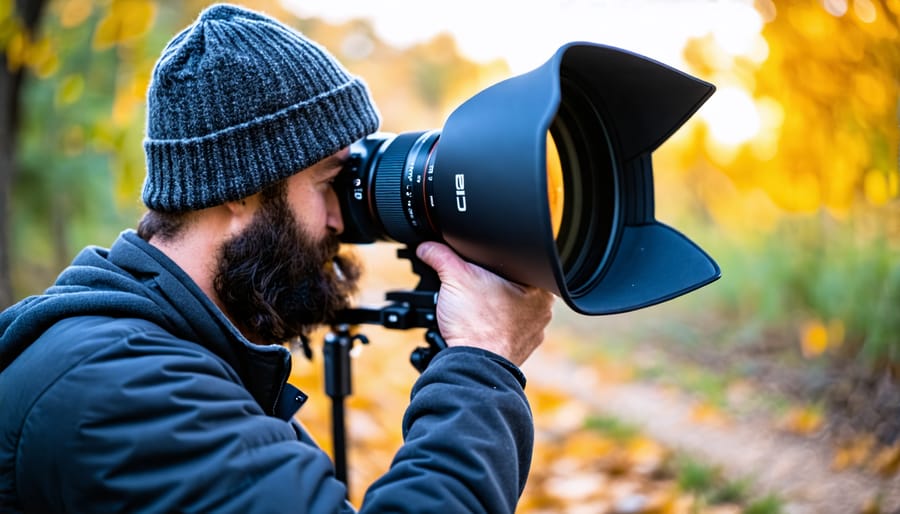
Optimal Situations for Use
Imagine you’re capturing the golden hour glow during an outdoor shoot, and you notice those pesky lens flares infiltrating your composition. This is where a lens hood becomes invaluable. It acts as a shield, effectively blocking stray light and preventing flares, ensuring your images retain their sharpness and vibrant colors. Lens hoods are also perfect companions in scenarios with unpredictable lighting, like a sunny day at the beach or a bustling street fair, where they mitigate contrast-killing light from sneaking into the frame.
In addition to controlling light, lens hoods offer physical protection to your lens. Picture yourself exploring rugged terrain or shooting in a crowded setting—your lens hood serves as the first line of defense against accidental knocks or scratches. For hobbyists and professionals alike, using a lens hood is particularly helpful when working with telephoto lenses outdoors, as they extend farther from the body, catching more unwanted light. By integrating a lens hood into your gear, you’re equipped to handle diverse situations with confidence, knowing your photos will shine without the interference of stray light or damage.
Attaching and Adjusting Your Lens Hood
When you’re stepping out to capture that perfect shot, understanding how to properly attach and adjust your lens hood can make a significant difference. Think of your lens hood as a handy tool to block unwelcome light, like those distracting sun rays that can sneak in from the sides and create flare or reduce contrast in your pictures. To attach your lens hood, start by aligning the hood’s mount threads with those on your lens. You’ll often find a white dot or mark that helps guide you—a simple twist clockwise, and you’ll hear a satisfying click when it’s securely in place.
Adjusting your lens hood is equally important. If you notice unwanted shadows or vignetting (a darkening of the corners in your image), especially when using wide-angle lenses, slightly rotate the hood to tweak its position. This minor adjustment can help optimize the light intake while still offering protection from accidental bumps or scratches. Additionally, some hoods are petal-shaped, which can seem puzzling at first. This design minimizes vignetting, ensuring that the hood doesn’t intrude into the frame.
It’s all about maximizing effectiveness and making sure you’re capturing your scene beautifully without interference. While experimenting with your settings, why not explore some creative backdrop ideas? Combining the right setup with a well-adjusted lens hood can lead to stunning results that truly stand out.
Common Misconceptions
Many photographers, both beginners and seasoned professionals, often misunderstand lens hoods, thinking they are optional accessories that don’t impact image quality. However, they play a crucial role in enhancing your photography. One common misconception is that lens hoods are only necessary in bright sunlight. While they excel at blocking lens flare from harsh sunlight, they also provide benefits in other conditions, such as harsh indoor lighting or even overcast environments where light can scatter and reduce contrast.
Another myth suggests that lens hoods mainly serve a protective role, which, while true, isn’t their primary function. Yes, they do help shield your lens from accidental bumps and scratches, but their primary purpose is to prevent unwanted light from hitting the lens, hence maintaining the rich colors and sharpness you desire in your photos. It’s similar to knowing how to properly hold your camera—using a lens hood is another way to ensure optimal outcomes.
Additionally, some photographers believe that lens hoods are cumbersome and inhibit creativity or composition. This couldn’t be further from the truth. By improving image contrast and reducing flares, a lens hood allows for clearer, more vivid images, providing greater creative freedom to explore different lighting conditions. So, don’t overlook this humble accessory; it’s an essential tool in your photography kit.
Conclusion
Lens hoods may initially seem like optional accessories, but their role in achieving crisp and clear photographs is invaluable. They help minimize lens flare and protect the lens from accidental bumps, making them indispensable for both steady shots and vibrant captures. Whether you’re shooting in harsh sunlight or in more controlled indoor lighting, incorporating a lens hood in your setup can elevate your results significantly. So, don’t overlook this humble tool; embrace its benefits to enhance your photography, no matter your experience level, and uncover new creative possibilities.



